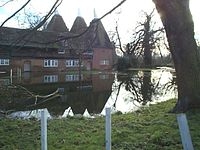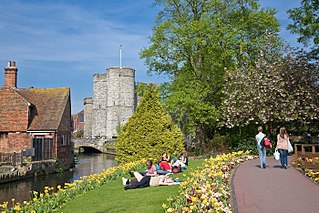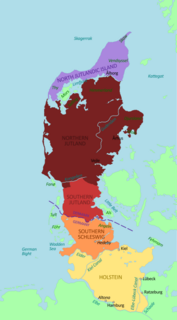
Mellitus was the first Bishop of London in the Saxon period, the third Archbishop of Canterbury, and a member of the Gregorian mission sent to England to convert the Anglo-Saxons from their native paganism to Christianity. He arrived in 601 AD with a group of clergy sent to augment the mission, and was consecrated as Bishop of London in 604. Mellitus was the recipient of a famous letter from Pope Gregory I known as the Epistola ad Mellitum, preserved in a later work by the medieval chronicler Bede, which suggested the conversion of the Anglo-Saxons be undertaken gradually, integrating pagan rituals and customs. In 610, Mellitus returned to Italy to attend a council of bishops, and returned to England bearing papal letters to some of the missionaries.

Plumstead is an area of South East London within the Royal Borough of Greenwich. It is located east of Woolwich.

Kent is a traditional county in South East England with long-established human occupation.

Ash is a village and civil parish in the Dover district of east Kent about three miles west of Sandwich.

Hastingleigh is a small civil parish centred on an escarpment of the Kent Downs.

Chartham is a village and civil parish on the Great Stour river in the vale of the Kent Downs, 4 miles (6 km) west of Canterbury, England. The Great Stour Way path passes through the village. A paper mill in the village has specialised in the production of tracing paper since 1938. There are numerous arable farms and orchards in the parish. The village has an unmanned station, Chartham, and a manned level crossing. It has an outlying locality sharing in many of the community resources, Chartham Hatch.

The Church of St Martin in Canterbury, England, situated slightly beyond the city centre, is the first church founded in England, the oldest parish church in continuous use and the oldest church in the entire English-speaking world. As such, it is recognised, along with Canterbury Cathedral and St Augustine's Abbey, as part of a World Heritage Site. Since 1668 the church has been part of the benefice of St Martin and St Paul Canterbury. Both St Martin's and nearby St Paul's churches are used for weekly services. The current rector of the parish is the Reverend Mark Richard Griffin.
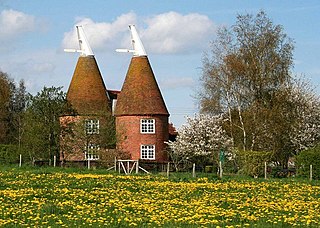
Frittenden is a village and civil parish in the Tunbridge Wells District of Kent, England. The parish is located on the flood plain of one of the tributaries of the River Medway, 15 miles (24 km) to the east of Tunbridge Wells: the village is three miles (4.8 km) south of Headcorn. It is in a very rural part of Kent. The parish church is dedicated to St Mary.
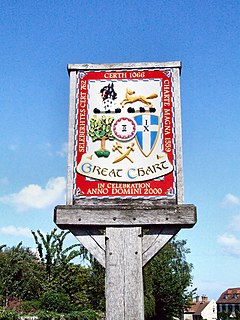
Great Chart is a village in the civil parish of Great Chart with Singleton in the Ashford Borough of Kent, England. The parish is split between the ancient village of Great Chart and the modern Singleton neighbourhood on the western outskirts of Ashford. The village centre of Great Chart is 2 miles (3.2 km) from the town centre.
St. Augustine's Church refers to many churches dedicated either to Augustine of Hippo or to Augustine of Canterbury, the first Archbishop of Canterbury.
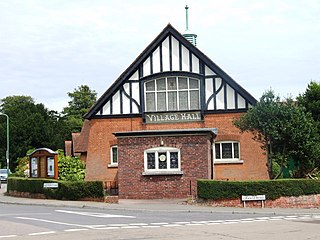
Saltwood is a village and civil parish in the Folkestone and Hythe District of Kent, England. Within the parish are two other settlements: Pedlinge and Sandling; both being small hamlets.

Guston is a village and civil parish in the Dover district of Kent, in South East England. The village lies about a quarter of a mile north of the campus of the Duke of York's Royal Military School, near Martin Mill. In the 1950s the village was the site of a public house, a post office, a Saxon church and approximately one-hundred homes. There is also a windmill present, which has been converted into a house. Nearby villages include Whitfield, East Langdon, Pineham and Buckland. The River Dour is approximately 2.71 km away from Guston, and there is easy access to main roads, with the A2 and A258 running around and through the village.

East Hendred is a village and civil parish about 4 miles (6.4 km) east of Wantage in the Vale of White Horse and a similar distance west of Didcot. The village is on East Hendred Brook, which flows from the Berkshire Downs to join the River Thames at Sutton Courtenay. East Hendred was part of Berkshire until the 1974 boundary changes transferred it to Oxfordshire.

Langdon is a village and civil parish near Dover in Kent, England. It was the site of West Langdon Abbey which was dissolved in 1535. Langdon is also more commonly referred to as East Langdon.
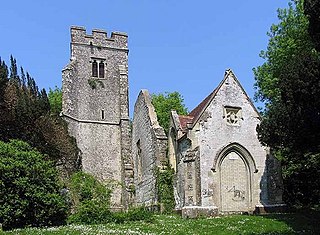
Eastwell is a hamlet and civil parish about 3 miles (5 km) north of Ashford, Kent, England. The 2011 Census recorded the parish's population as 103.
Peter of Canterbury or Petrus was the first abbot of the monastery of SS. Peter and Paul in Canterbury and a companion of Augustine in the Gregorian mission to Kent. Augustine sent Peter as an emissary to Rome around 600 to convey news of the mission to Pope Gregory I. Peter's death has traditionally been dated to around 607, but evidence suggests that he was present at a church council in Paris in 614, so he probably died after that date.

St Augustine's Church is a Grade I listed Anglican church in the village of Brookland, Kent, in Walland Marsh, about 5 miles (8.0 km) north-east of Rye, East Sussex. It was originally built about 1250. It has the unusual feature that the bell tower is separate from the rest of the church.
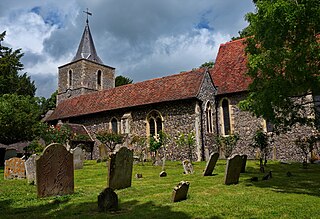
St Vincent of Saragossa's Church is the Church of England parish church of Littlebourne, Kent, England. The parish is part of the Benefice of Littlebourne including Ickham, Wickhambreaux and Stodmarsh. It is a Grade I listed building.
